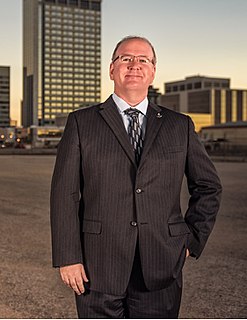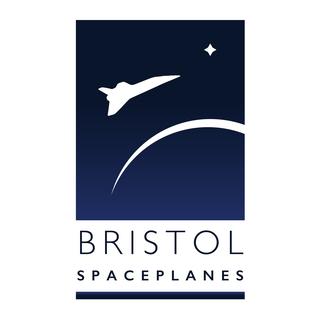
A spacecraft is a vehicle or machine designed to fly in outer space. A type of artificial satellite, spacecraft are used for a variety of purposes, including communications, Earth observation, meteorology, navigation, space colonization, planetary exploration, and transportation of humans and cargo. All spacecraft except single-stage-to-orbit vehicles cannot get into space on their own, and require a launch vehicle.

Space tourism is human space travel for recreational purposes. There are several different types of space tourism, including orbital, suborbital and lunar space tourism.

Spaceflight is an application of astronautics to fly spacecraft into or through outer space, either with or without humans on board. Most spaceflight is uncrewed and conducted mainly with spacecraft such as satellites in orbit around Earth, but also includes space probes for flights beyond Earth orbit. Such spaceflight operates either by telerobotic or autonomous control. The more complex human spaceflight has been pursued soon after the first orbital satellites and has reached the Moon and permanent human presence in space around Earth, particularly with the use of space stations. Human spaceflight programs include the Soyuz, Shenzhou, the past Apollo Moon landing and the Space Shuttle programs, with currently the International Space Station as the main destination of human spaceflight missions while China's Tiangong Space Station is under construction.
Human spaceflight programs have been conducted, started, or planned by multiple countries and companies. Until the 21st century, human spaceflight programs were sponsored exclusively by governments, through either the military or civilian space agencies. With the launch of the privately funded SpaceShipOne in 2004, a new category of human spaceflight programs – commercial human spaceflight – arrived. As of July 2021, three countries and one private company (SpaceX) have launched humans to Earth orbit, and two private companies have launched humans on a suborbital trajectory. The criteria for what constitutes human spaceflight vary. The Fédération Aéronautique Internationale defines spaceflight as any flight over 100 kilometers (62 mi). In the United States professional, military, and commercial astronauts who travel above an altitude of 80 kilometers (50 mi) are awarded the United States Astronaut Badge. This article follows the FAI definition of spaceflight.

A sub-orbital spaceflight is a spaceflight in which the spacecraft reaches outer space, but its trajectory intersects the atmosphere or surface of the gravitating body from which it was launched, so that it will not complete one orbital revolution or reach escape velocity.

Private spaceflight is spaceflight or the development of spaceflight technology that is conducted and paid for by an entity other than a government agency.

Virgin Galactic is an American spaceflight company founded by Richard Branson and his British Virgin Group retains an 11.9% stake through Virgin Investments Limited. It is headquartered in California, USA, and operates from New Mexico. The company is developing commercial spacecraft and aims to provide suborbital spaceflights to space tourists. Virgin Galactic's suborbital spacecraft are air launched from beneath a carrier airplane known as White Knight Two. Virgin Galactic‘s maiden spaceflight occurred in 2018 with its VSS Unity spaceship. Branson had originally hoped to see a maiden spaceflight by 2010, but the date was delayed for several years, primarily due to the October 2014 crash of VSS Enterprise.

Colorado Air and Space Port, formerly known as Front Range Airport, is a public airport located in unincorporated Adams County, Colorado, in the United States, adjacent to Aurora and six miles (9.7 km) southeast of Denver International Airport(ICAO: KDEN, FAA LID: DEN). Colorado Air and Space Port serves the Denver-Aurora-Lakewood, CO Metropolitan Statistical Area. The postal designation of Watkins, a nearby unincorporated community, is used in the airport's mailing address.
Rocketplane Limited, Inc. was a spacecraft design and development company headquartered in De Pere, Wisconsin. After filing for bankruptcy, the company reincorporated as Rocketplane Global Inc.

The Rocketplane XP was a suborbital spaceplane design that was under development c. 2005 by Rocketplane Kistler. The vehicle was to be powered by two jet engines and a rocket engine, intended to enable it to reach suborbital space. The XP would have operated from existing spaceports in a manner consistent with established commercial aviation practices. Commercial flights were projected to begin in 2009. Rocketplane Global declared bankruptcy in mid-June 2010. Their assets were auctioned off in 2011.

XCOR Aerospace was an American private spaceflight and rocket engine development company based at the Mojave Air and Space Port in Mojave, California, Midland International Air and Spaceport in Midland, Texas and the Amsterdam area, the Netherlands. XCOR was formed in 1999 by former members of the Rotary Rocket rocket engine development team, and ceased operations in 2017.

Jeff Greason is a co-founder and Chief Technologist of Electric Sky, a company developing the ability to wirelessly transmit power to moving vehicles. He also serves as chairman of the board of the Tau Zero Foundation.

The XCOR EZ-Rocket was a test platform for the XCOR XR-4A3 rocket propulsion system. The airplane was a modified Rutan Long-EZ, with the propeller replaced by first one, then later a pair of pressure-fed regeneratively cooled liquid-fueled rocket engines and an underslung fuel tank. The engines were restartable in flight, and were contained within Kevlar armor shielding. The EZ-Rocket was registered as an experimental aircraft.

The Airbus Defence and Space Spaceplane, also called EADS Astrium TBN according to some sources, is a suborbital spaceplane concept for carrying space tourists, proposed by EADS Astrium, the space subsidiary of the European consortium EADS. A full-size mockup was officially unveiled in Paris, France, on June 13, 2007, and is now on display in the Concorde hall of the Musée de l'Air et de l'Espace. The project is the first space tourism entry by a major aerospace contractor.

The XCOR Lynx was a proposed suborbital horizontal-takeoff, horizontal-landing (HTHL), rocket-powered spaceplane that was under development by the California-based company XCOR Aerospace to compete in the emerging suborbital spaceflight market. The Lynx was intended to carry one pilot, a ticketed passenger, and/or a payload above 100 kilometres (62 mi) altitude. The concept was under development since 2003, when a two-person suborbital spaceplane was announced under the name Xerus.
Aircraft can have different ways to take off and land. Conventional airplanes accelerate along the ground until sufficient lift is generated for takeoff, and reverse the process to land. Some airplanes can take off at low speed, this being a short takeoff. Some aircraft such as helicopters and Harrier Jump Jets can take off and land vertically. Rockets also usually take off vertically, but some designs can land horizontally.

Bristol Spaceplanes (BSP) is a British aerospace company based in Bristol, England, who has designed a number of spaceplanes with sub-orbital and orbital capabilities. The company's stated goal is "to realise low-cost access to space", primarily through reusable launch vehicles, claiming the cost of human space travel has the potential to be reduced by a factor of 1,000.
Exos Aerospace Systems & Technologies is an aerospace manufacturer and developer of reusable launch systems intended to support uncrewed orbital spaceflight launches, and is based in Caddo Mills, Texas.
VR-190 was the USSR's first rocket project designed to launch a human into suborbital space flight on a ballistic trajectory. The project ran in the 1940s and 1950s and, according to official sources, did not achieve its set goals. However, conspiracy theories surrounding the project claim that although manned flights officially failed, cosmonauts were successfully sent into space in the 1950s.
Rocketplane Global Inc. is a reusable rocketplane aerospace design and development company headquartered in De Pere, Wisconsin.














